Related Research Articles
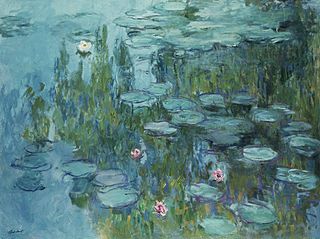
Cyan is the color between blue and green on the visible spectrum of light. It is evoked by light with a predominant wavelength between 490 and 520 nm, between the wavelengths of green and blue.

The CMYK color model is a subtractive color model, based on the CMY color model, used in color printing, and is also used to describe the printing process itself. The abbreviation CMYK refers to the four ink plates used: cyan, magenta, yellow, and key (black).
Magenta is a purplish-red color. On color wheels of the RGB (additive) and CMY (subtractive) color models, it is located precisely midway between red and blue. It is one of the four colors of ink used in color printing by an inkjet printer, along with yellow, cyan, and black to make all the other colors. The tone of magenta used in printing, printer's magenta, is redder than the magenta of the RGB (additive) model, the former being closer to rose.

The Land Camera is a model of self-developing film camera manufactured by Polaroid between 1948 and 1983. It is named after the inventor, American scientist Edwin Land, who developed a process for self-developing photography between 1943 and 1947. After Edwin Land's retirement from Polaroid in 1982, the name 'Land' was dropped from the camera name. The first commercially available model was the Model 95, which produced sepia-colored prints in about 1 minute. It was first sold to the public on November 26, 1948.
Photographic processing or photographic development is the chemical means by which photographic film or paper is treated after photographic exposure to produce a negative or positive image. Photographic processing transforms the latent image into a visible image, makes this permanent and renders it insensitive to light.
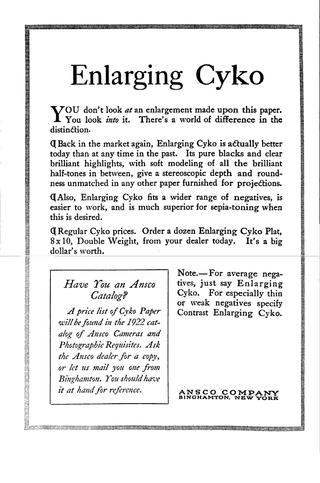
Photographic paper is a paper coated with a light-sensitive chemical formula, like photographic film, used for making photographic prints. When photographic paper is exposed to light, it captures a latent image that is then developed to form a visible image; with most papers the image density from exposure can be sufficient to not require further development, aside from fixing and clearing, though latent exposure is also usually present. The light-sensitive layer of the paper is called the emulsion. The most common chemistry was based on silver halide but other alternatives have also been used.
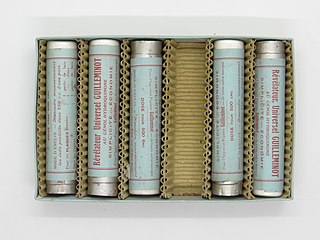
In the processing of photographic films, plates or papers, the photographic developer is one or more chemicals that convert the latent image to a visible image. Developing agents achieve this conversion by reducing the silver halides, which are pale-colored, into silver metal, which is black when in the form of fine particles. The conversion occurs within the gelatine matrix. The special feature of photography is that the developer acts more quickly on those particles of silver halide that have been exposed to light. When left in developer, all the silver halides will eventually be reduced and turn black. Generally, the longer a developer is allowed to work, the darker the image.
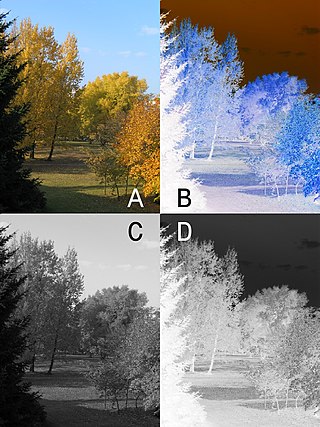
In photography, a negative is an image, usually on a strip or sheet of transparent plastic film, in which the lightest areas of the photographed subject appear darkest and the darkest areas appear lightest. This reversed order occurs because the extremely light-sensitive chemicals a camera film must use to capture an image quickly enough for ordinary picture-taking are darkened, rather than bleached, by exposure to light and subsequent photographic processing.
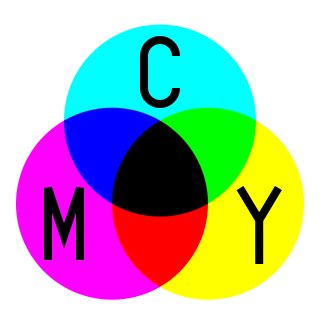
Subtractive color or subtractive color mixing predicts the spectral power distribution of light after it passes through successive layers of partially absorbing media. This idealized model is the essential principle of how dyes and pigments are used in color printing and photography, where the perception of color is elicited after white light passes through microscopic "stacks" of partially absorbing media allowing some wavelengths of light to reach the eye and not others, and also in painting, whether the colors are mixed or applied in successive layers.
C-41 is a chromogenic color print film developing process introduced by Kodak in 1972, superseding the C-22 process. C-41, also known as CN-16 by Fuji, CNK-4 by Konica, and AP-70 by AGFA, is the most popular film process in use, with most, if not all photofinishing labs devoting at least one machine to this development process.

In infrared photography, the photographic film or image sensor used is sensitive to infrared light. The part of the spectrum used is referred to as near-infrared to distinguish it from far-infrared, which is the domain of thermal imaging. Wavelengths used for photography range from about 700 nm to about 900 nm. Film is usually sensitive to visible light too, so an infrared-passing filter is used; this lets infrared (IR) light pass through to the camera, but blocks all or most of the visible light spectrum.
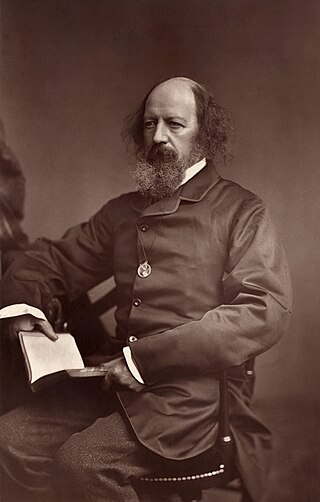
A carbon print is a photographic print with an image consisting of pigmented gelatin, rather than of silver or other metallic particles suspended in a uniform layer of gelatin, as in typical black-and-white prints, or of chromogenic dyes, as in typical photographic color prints.

Gum printing is a way of making photographic reproductions without the use of silver halides. The process uses salts of dichromate in common with a number of other related processes such as sun printing.
Chromogenic photography is photography that works by a chromogen forming a conventional silver image and then replacing it with a dye image. Most films and papers used for color photography today are chromogenic, using three layers, each providing their own subtractive color. Some chromogenic films provide black-and-white negatives, and are processed in standard color developers. In this case, the dyes are a neutral color.
A chromogenic print, also known as a C-print or C-type print, a silver halide print, or a dye coupler print, is a photographic print made from a color negative, transparency or digital image, and developed using a chromogenic process. They are composed of three layers of gelatin, each containing an emulsion of silver halide, which is used as a light-sensitive material, and a different dye coupler of subtractive color which together, when developed, form a full-color image.

Thermal paper is a special fine paper that is coated with a material formulated to change color locally when exposed to heat. It is used in thermal printers, particularly in inexpensive devices such as adding machines, cash registers, and credit card terminals and small, lightweight portable printers.

Redscale is a technique of shooting photographic film where the film is exposed from the wrong side, i.e. the emulsion is exposed through the base of the film. Normally, this is done by winding the film upside-down into an empty film canister. The name "redscale" comes because there is a strong color shift to red due to the red-sensitive layer of the film being exposed first, rather than last [the red layer is normally the bottom layer in C-41 film]. All layers are sensitive to blue light, so normally the blue layer is on top, followed by a filter. In this technique, blue light exposes the layers containing cyan and magenta dyes, but the layer containing yellow dye is left unexposed due to the filter. E-6 film has also been used for this technique.
Dye transfer is a continuous-tone color photographic printing process. It was used to print Technicolor films, as well as to produce paper colour prints used in advertising, or large transparencies for display.
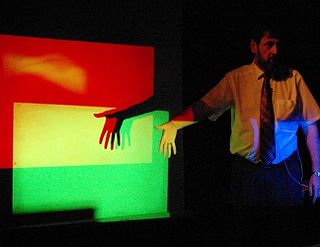
There are three types of color mixing models, depending on the relative brightness of the resultant mixture: additive, subtractive, and average. In these models, mixing black and white will yield white, black and gray, respectively. Physical mixing processes, e.g. mixing light beams or oil paints, will follow one or a hybrid of these 3 models. Each mixing model is associated with several color models, depending on the approximate primary colors used. The most common color models are optimized to human trichromatic color vision, therefore comprising three primary colors.

Photographic film is a strip or sheet of transparent film base coated on one side with a gelatin emulsion containing microscopically small light-sensitive silver halide crystals. The sizes and other characteristics of the crystals determine the sensitivity, contrast, and resolution of the film. Film is typically segmented in frames, that give rise to separate photographs.
References
- ↑ Czapek, C.W., "Experiments with the Bleach-Out Printing Process", British Journal of Photography, Colour Photography Supplement, April 5, 1907, pp. 28-29.
- ↑ The Grotthuss-Draper law.